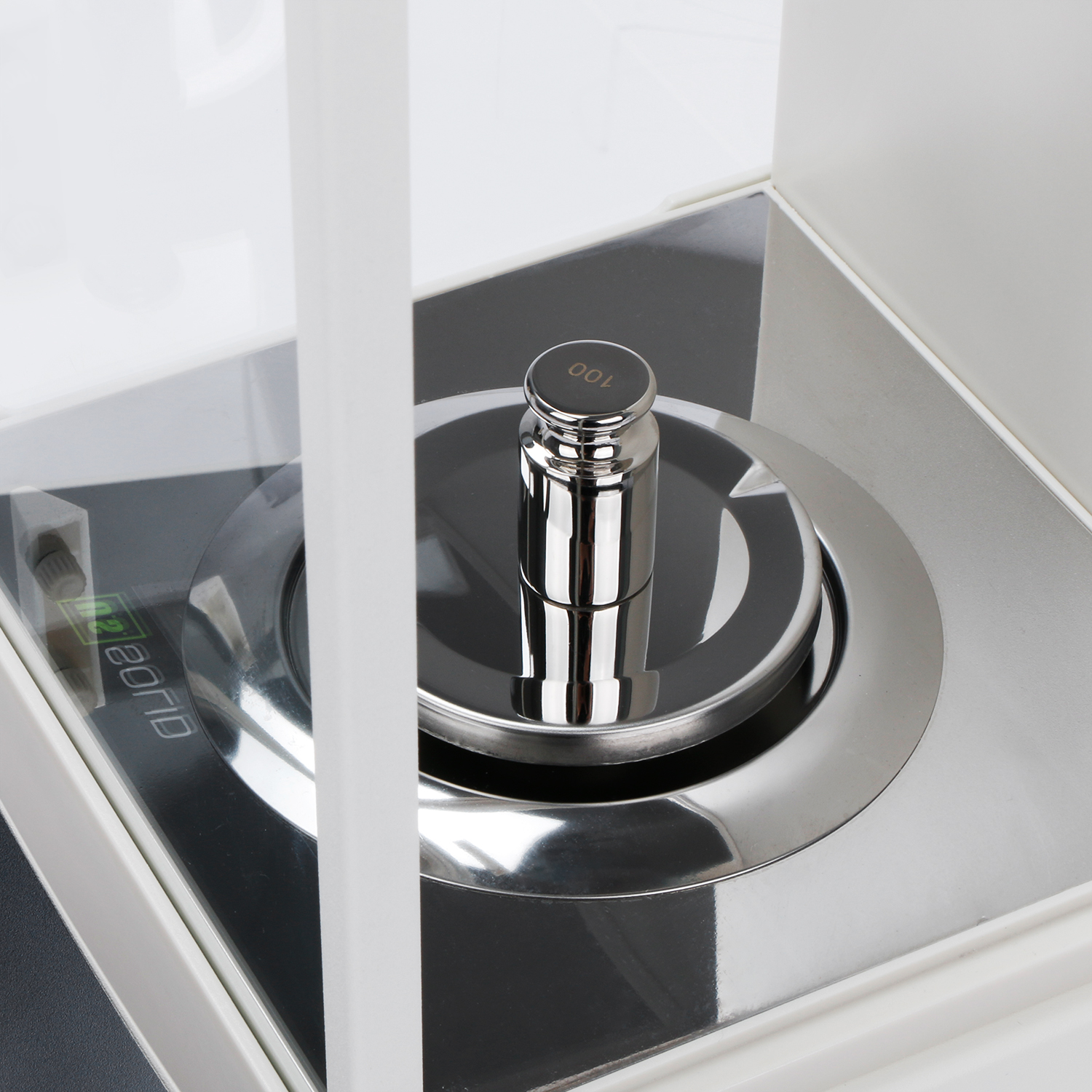As a precision weighing instrument, analytical balances, especially those high-precision analytical balances used in laboratories of research institutions and pharmaceutical companies, need to be accurate at all times to produce accurate and consistent data. To ensure the accuracy of the analytical balance, it needs to be calibrated frequently. There are two calibration methods: external calibration and internal calibration.
External Calibration
External calibration is to calibrate the analytical balance with the calibration weight that comes with the balance. Traditional analytical balance usually come with a calibration weight, whose mass depends on the upper capacity of the analytical balance. For example, if you buy a 0.1mg analytical balance with a capacity of 210g, you will usually get a 200g calibration weight.
The analytical balance is provided with buttons to perform calibration with the weight. The basic step is to press a button to enter the calibration mode, then place the calibration weight on the weighing pan and press a button to perform the calibration. Once the calibration is completed, a signal will be displayed on the screen.

In addition to this basic one-point calibration, you can also perform linear calibration if a set of weights is available.
Take the U.S. Solid USS-DBS83 Analytical Balance as an example. To perform the external calibration, turn on the balance and press the "CAL" and "ON" keys at the same time to enter linear calibration mode, and then follow the on-screen prompts to place 200g, 150g, 100g, 50g calibration weights in sequence to calibrate, and the linear calibration will be completed after the calibration steps of all the weights are finished.
Internal Calibration
Internal calibration is a more advanced calibration method. For internal calibration,the analytical balance has built-in weights and is equipped with automatic calibration programs. The balance usually provides a button for internal calibration. When the balance needs to be calibrated, just press thatbutton and the balance will automatically perform the calibration. Such a balance will save your time and effort from the calibration process.
We take U.S. Solid USS-DBS47 Analytical Balance as an example. When the balance is in the no-load state, pressthe “CAL” button and “CAL-INT” will be flashing on the screen. Then the balance will perform automatic internal calibration on its own.
Analytical balance with internal calibration function usually also has an automatic calibration function. The user presets the time interval for automatic calibration, and the balance will be automatically calibrated at every time point of the time interval. For instance, if you select “30-minute” option, the analytical balance will be automatically calibrated every 30 minutes.
Analytical balance with internal calibration function will also come with external calibration function, but not necessarily equipped with a calibration weight. You may purchase calibration weights online from marketplaces like Amazon or eBay.
External Calibration or Internal Calibration?
Obviously, an analytical balance with internal calibration is much more convenientand inevitably costs more. For instance, the price of U.S. Solid USS-DBS47 analytical balance which has comes with internal calibration function is $597, while the price of U.S. Solid USS-DBS83 analytical balance which comes with only external calibration is $437.
If you just want to have a cost-effective analytical balance, go for one with external calibration. If you want to save your time and labor cost, you can choose a balance with internal calibration.
